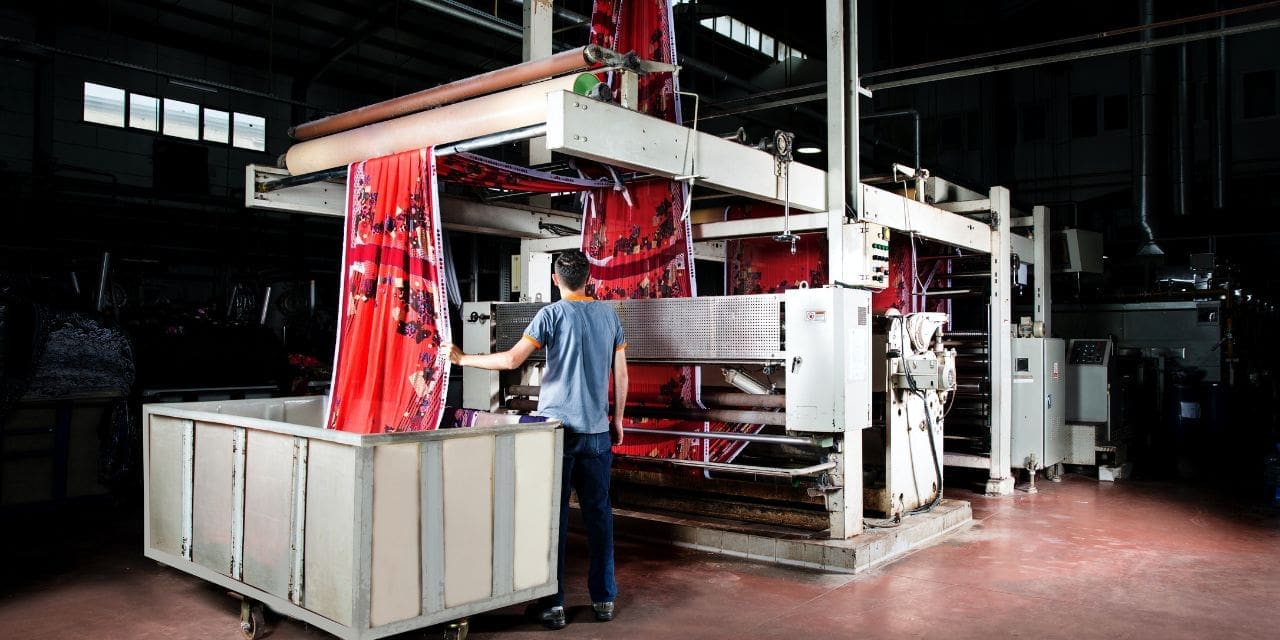Automation in textile machinery has been a topic of significant interest in India in recent years, as textile manufacturers seek to increase efficiency and reduce costs in a highly competitive industry. Automation in the textile industry refers to the use of technology and machines to perform tasks that were previously done by humans. This includes everything from spinning and weaving to finishing and packaging. Automation has brought about many changes to the textile industry, and there are both advantages and disadvantages to consider.
One of the primary benefits of automation in the textile industry is increased efficiency. Automated systems are able to operate at a much faster pace than manual labour, which allows manufacturers to increase their production capacity and reduce the time required to complete tasks. This can lead to significant cost savings, as manufacturers can produce more goods in less time, while also reducing the need for labour.
In addition to increased efficiency, automation can also improve the quality of textile products. Automated systems are able to operate with greater precision and consistency than manual labour, which can help to reduce defects and improve the overall quality of the finished product. This can be particularly beneficial in the textile industry, where even minor defects can have a significant impact on the quality of the final product.
Another benefit of automation in the textile industry is improved safety. Automated systems can reduce the risk of injury to workers, as they are not required to perform tasks that may be physically demanding or hazardous. This can help to improve working conditions and create a safer environment for employees.
There are several key technologies that are driving the adoption of automation in the textile industry in India. One of the most significant is robotic automation, which allows manufacturers to automate a wide range of tasks, including material handling, cutting, and sewing. Robotic automation can be particularly useful in the textile industry, as it allows manufacturers to handle large volumes of material and complete tasks with high levels of precision and consistency.
Another important technology in the automation of the textile industry is machine learning, which allows machines to learn and adapt to new tasks and environments over time. This can help to improve the efficiency and effectiveness of automated systems, as they are able to learn from their mistakes and continually improve their performance.
In addition to these technologies, there are also a number of other tools and systems that are being used to automate the textile industry in India. These include computer-aided design (CAD) systems, which allow manufacturers to design and test new products using computer simulations, and advanced sensors and monitoring systems, which can help to improve the efficiency and accuracy of automated systems.
Overall, automation in the textile industry in India is providing a range of benefits to manufacturers, including increased efficiency, improved quality, and enhanced safety. With the continued development and adoption of new technologies, it is likely that automation will play an even larger role in the textile industry in the future.

However, there are also some disadvantages to automation in the textile industry. One of the main concerns is the potential for job loss. As machines take over certain tasks, there may be a need for fewer human workers. This can lead to unemployment and a decline in the number of jobs available in the industry. In addition, some workers may be concerned about the potential for machines to eventually replace them entirely.
Another disadvantage of automation in the textile industry is the cost. While automation can lead to cost savings in the long run, the initial investment in technology and machinery can be expensive. This can be a barrier for smaller companies or those with limited financial resources. In addition, there may be ongoing costs associated with maintaining and repairing the machinery, as well as training workers to use it.
Automation in the textile industry can also have negative environmental impacts. While some automation technologies can be more energy-efficient than their human counterparts, the production and disposal of machines can contribute to pollution and waste. In addition, automation may lead to a greater reliance on fossil fuels, as machines often require electricity to operate.
Automation has brought about significant innovation in the textile industry, impacting every aspect of production from spinning and weaving to processing and garmenting. This has allowed manufacturers to increase efficiency, improve quality, and enhance safety in the industry. However, the fast fashion world has created a paradox for the textile industry as consumers demand both fast and high-quality products.
In order to meet these demands, automation has become increasingly important in the textile industry. Automated systems are able to operate at a faster pace, with greater precision and consistency, which can help to produce high-quality products quickly. However, this also requires a shift towards a more tech-savvy workforce, as workers need to be able to handle and operate these automated machines.
While automation can help to meet the demands of fast fashion consumers, it is important for companies to also consider the needs of those who prioritize quality over speed. This can be achieved through the use of advanced technologies such as machine learning, which allows machines to adapt and improve their performance over time, and through the implementation of strict quality control measures.
In conclusion, automation in the textile industry has both advantages and disadvantages. On the one hand, it can increase efficiency and productivity, improve safety, and lead to improved working conditions for employees. On the other hand, it can lead to job loss, be expensive to implement, and have negative environmental impacts. Companies and policymakers must carefully consider the potential trade-offs of automation in order to make informed decisions about its use in the textile industry.

